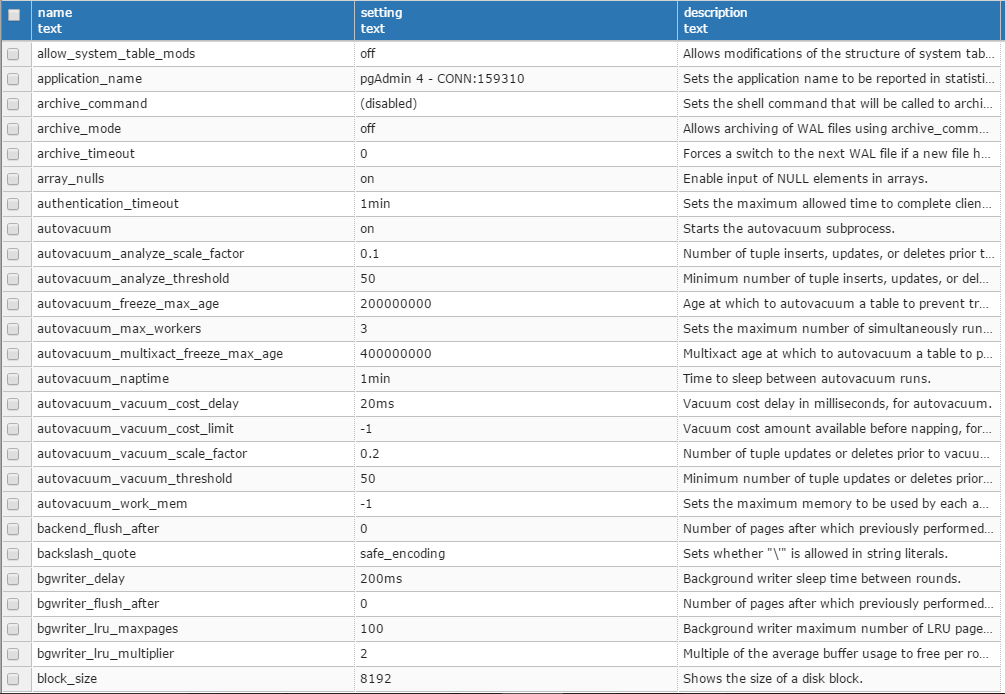Postgres comes with a powerful command line tool called psql. Alternatively, input can be from a file. In addition, it provides a number of meta-commands and various shell-like features to facilitate writing scripts and automating a wide variety of tasks. PostgreSQL provides you with two ways to show databases.
Here is example of listing databases in postgresql. A database is a set of tables, information about those tables, information about users and their permissions, and much more. Technically these are psql commands, because you issue these commands from the psql command line program.
It provides a visual, user-friendly environment with a host of practical solutions that make managing databases easy. Once we start the psql shell, we will be asked to provide details like server, database, port, username and password. You are now connected to database testdb as user postgres. With the psql comman you’ll be greeted by its current version and command prompt.

It includes three commonly used benchmark databases : World: Based on the MySQL World sample. Has a list of Cities, Countries, and what language they speak. CREATE TABLE, ALTER TABLE, and COPY SQL statements of source database.
To restore these dumps psql command is enough. OfADatabaseFromPreordainedKnowledge probably because of some. I know how to to a certain database, but not list all of them. I know this must be possible because the phppgAdmin web site demonstrates it with their trial server. We focus on the simplest and most effective.
And while not strictly require the Cloud Databases CLI makes it easier to connect and. Using createdb a command-line executable. This includes both code snippets embedded in the card text and code that is included as a file attachment. Is it possible in postgreSQL to simply connect to the server and then list , create, use and examine databases ? This should get your psql utility running. The most common way to exit psql is using a meta-command.
Postgres login FAQ: How do I to a Postgres database from the command line? To to a Postgres database from the command line, use the psql command. These two commands do not require the user to invoke psql nor understand details of using it. Familiarize yourself with our Getting Started guide and complete the steps for setting your Linode’s hostname and timezone. Complete the sections of our Securing Your.
SQL is a language which lets you query relational databases and ask meaningful questions. List all current connections. Sunucu Uygulama Komutları 1. With it you can enter and run SQL queries and get any in the console. We can always connect to that postgres database, list the databases , decide which we want and then switch to connecting to one of those.
Now we have started the terminal. PgAdmin III ile iki veritabanı ve birkaç tablo oluşturdum, bu yüzden listelenmeleri gerektiğini. This is a collection of the most common commands I run while administering Postgres databases.
The variables shown between the open and closed tags, and , should be replaced with a name you choose. More than year has passed since last update. After you create a user in the cluster, use psql to connect to the cluster as doadmin or another admin user.
Connect to the database, then update the user’s permissions and verify that their access has changed. To create a database, you must be a superuser or have the special CREATEDB. It’s best to list databases and tables with the system administrator account to ensure that you can view your database objects without being filtered by permission levels. You can also create using pgAdmin UI.
Postgresql show tables how to get a list column names and datatype of table in postgresql postgresql describe table postgresql cheat sheet linksprite learning center. In order to connect to a database you need to know the name of your target database, the host name and port number of the server, and what user name you want to connect as. If an argument is found that does not belong to any option it will.
Hiç yorum yok:
Yorum Gönder
Not: Yalnızca bu blogun üyesi yorum gönderebilir.